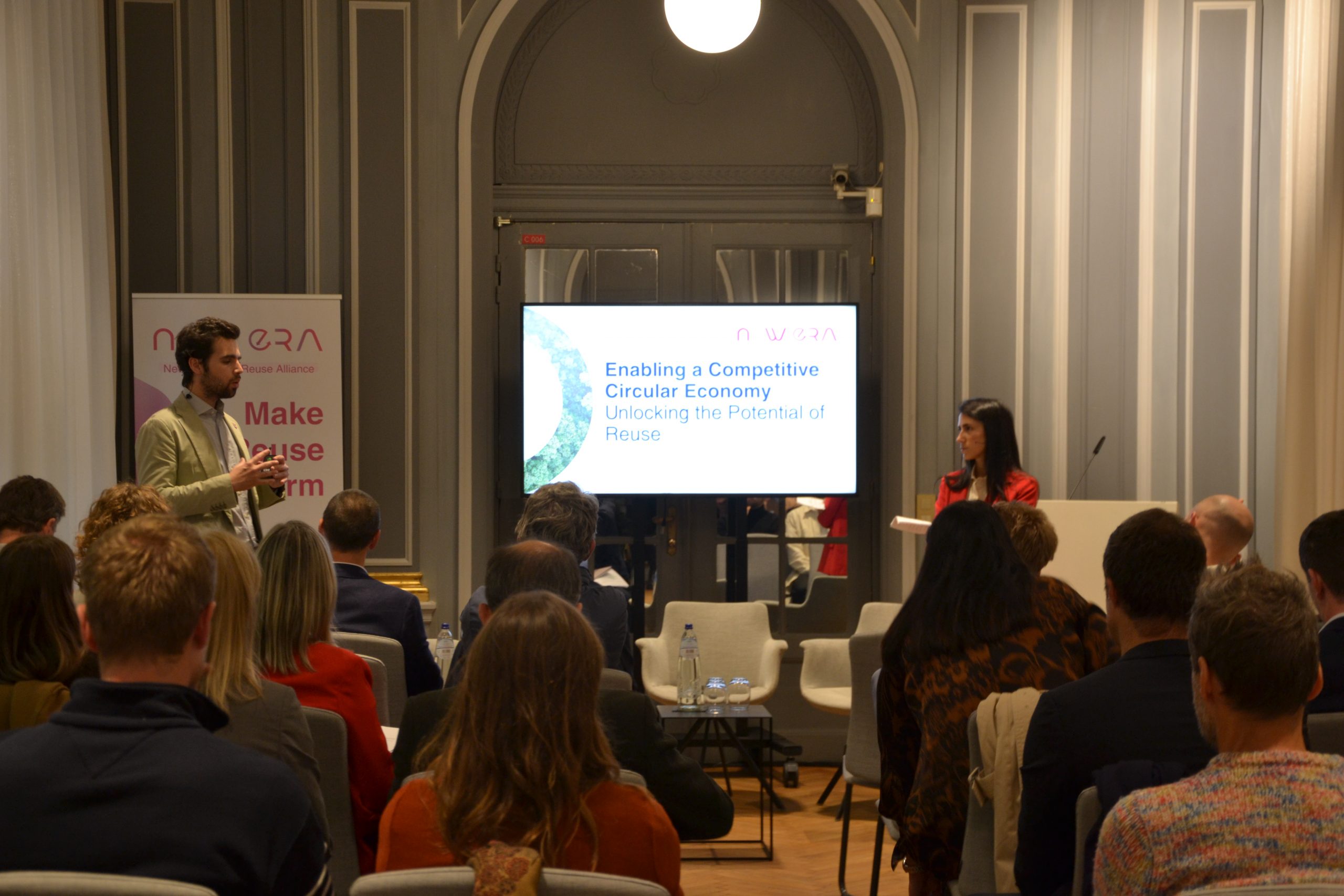1 October, 2025
New ERA publishes its contribution to the Circular Economy Act Consultation, calling for reuse at the core

On 1 August, the European Commission launched its public consultation on the Circular Economy Act (CEA), which is expected to be published at the end of 2026. The CEA aims to accelerate Europe’s transition to a circular economy by removing barriers in the single market for waste, secondary raw materials, and reusable or recycled products. Today, New ERA publishes its contribution to the consultation, seizing a pivotal opportunity to tackle structural barriers and put reuse at the heart of Europe’s circular economy.
Over the past legislative term, several regulations have sought to advance circularity, such as the Waste Framework Directive¹ (WFD), the Packaging and Packaging Waste Regulation² (PPWR), the Ecodesign for Sustainable Products Regulation³ (ESPR), or the Right to Repair Directive⁴. Yet, progress remains limited: the EU’s circularity rate has stagnated, rising only marginally from 10.7% in 2010 to 11.8% in 2023⁵.
To unlock Europe’s full circular potential, the economic framework must support the legislative agenda and enable businesses to meet the objectives of the EU Competitiveness Compass⁶ – positioning Europe as a global leader in the circular economy by 2030. Therefore, the CEA should serve as a strategic guide to transform production and consumption patterns, strengthen resilient economies, and create high-quality employment in circular sectors.
To turn the EU Clean Industrial Deal⁷ objective into reality – doubling the circularity rate from 12% to 24% by 2030 – New ERA is calling on the European Commission to focus on three key levers:
- Optimising the EU tax framework through circular VAT to incentivise reuse, repair, and secondary materials;
- Embedding circularity through EU public procurement, creating strong demand for durable, reusable, and environmentally sound products;
- Modernising Extended Producer Responsibility (EPR) to reward circular design, repairability, and reuse while supporting operational and capital needs for reuse systems.
Quotation:
“The Circular Economy Act must align Europe’s economic framework with circularity. The legislative groundwork is ready, and businesses are prepared – now is the time to provide the financial and systemic pathway that will enable reuse to reach its full potential across Europe.”
Note to editors:
[1] Directive 2008/98/EC of the European Parliament and of the Council of 19 November 2008 on waste and repealing certain Directives
[2] Regulation (EU) 2025/40 of the European Parliament and of the Council of 19 December 2024 on packaging and packaging waste, amending Regulation (EU) 2019/1020 and Directive (EU) 2019/904, and repealing Directive 94/62/EC
[3] Regulation (EU) 2024/1781 of the European Parliament and of the Council of 13 June 2024 establishing a framework for the setting of ecodesign requirements for sustainable products, amending Directive (EU) 2020/1828 and Regulation (EU) 2023/1542 and repealing Directive 2009/125/EC
[4]Directive (EU) 2024/1799 of the European Parliament and of the Council of 13 June 2024 on common rules promoting the repair of goods and amending Regulation (EU) 2017/2394 and Directives (EU) 2019/771 and (EU) 2020/1828 (Text with EEA relevance)
[5] European Environment Agency, Europe’s circular economy in facts and figures, 2024
[6] Communication from the Commission to the European Parliament, the European Council, the Council, the European Economic and Social Committee and the Committee of the Regions – A Competitiveness Compass for the EU
[7] Communication from the Commission to the European Parliament, the Council, the European Economic and Social Committee and the Committee of the Regions – The Clean Industrial Deal: A joint roadmap for competitiveness and decarbonisation





